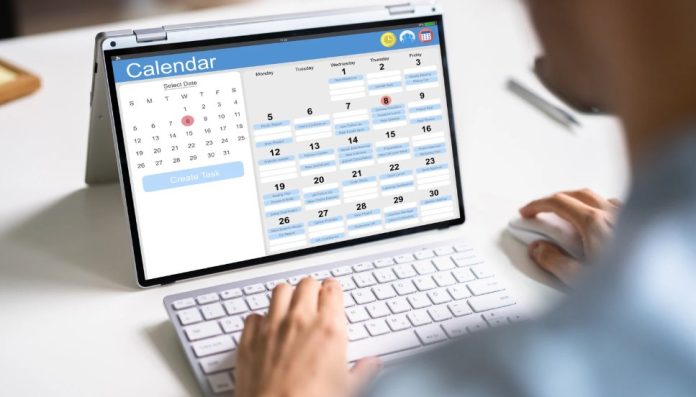Table of Contents
When I started this campaign, I had nothing, no referrals, no existing relationships, and no list of people waiting to hear from me.
I had to start from scratch. My goal was clear: book 20 meetings in 30 days with complete strangers. No warm intros. No fancy tools. Just cold outreach and a simple process.
And it worked. Here’s exactly how I did it, and how you can too.
How Can You Book 20 Meetings with Zero Warm Leads?
Step 1: The Right Mindset

Let’s be honest, cold outreach feels awkward at first. You’re reaching out to people who don’t know you. You’re interrupting their day. And rejection? It’s constant.
But here’s what changed the game for me: I stopped trying to sell. Instead, I focused on starting conversations.
The goal wasn’t to pitch. It was to spark curiosity. That small mindset shift made everything feel lighter, and more effective.
Step 2: Know Who You’re Talking To
Before I sent a single message, I got laser-focused on my audience. I wasn’t targeting “anyone who might be interested.” I was targeting specific people with specific problems.
I built a list of 100 prospects. All fit my ideal customer profile. All were decision-makers. Then, I researched each one.
I looked at their:
- Company size
- Role
- Recent activity on LinkedIn
- Tech stack (if available)
- Industry trends they care about
This didn’t take forever. I used tools like LinkedIn Sales Navigator and company websites. Ten minutes of research per person made my messages 10x stronger.
Step 3: Write Like a Human

Most cold messages feel robotic. That’s why people ignore them. I made sure mine felt personal. Casual. Like something I’d actually say out loud.
Here’s a version of the cold message I sent most often:
Subject: Quick question about [insert goal/challenge]
Hey [First Name], saw you’re leading [X role] at [Company], impressive growth over the last few months.
Curious, are you exploring [specific result] this quarter? I’ve helped teams in [their industry] with [simple result].
Worth a quick chat? Totally fine if not.
– [My Name]
That’s it. Short. Direct. Easy to reply to.
I tested different versions, but this simple approach worked best. And every email included a clean signature I made using an email signature generator Gmail tool, because even small details can build trust.
Step 4: Follow a System
Most people send one message and give up. That’s a mistake. The truth is, most replies come from follow-ups. People are busy. Your first message is just a blip in their day.
I created a simple follow-up sequence. Nothing pushy, just helpful reminders.
Here’s what it looked like:
- Day 1: Personalized cold email
- Day 2: LinkedIn profile view (no message)
- Day 3: Connection request on LinkedIn
- Day 4: Follow-up email (“Just circling back”)
- Day 5: LinkedIn message if connected
By Day 5, I was either booked, ignored, or politely declined. That’s all I needed to know.
Step 5: Be Real, Not Perfect

One of the first replies I got was: “Thanks for the honest message, refreshing to see something that doesn’t feel scripted.”
That stuck with me. People can tell when you’re trying too hard. I stopped polishing every word and started being real.
Sometimes I’d mention something funny from their profile. Other times I’d comment on a recent post. If I had no hook, I’d be honest:
“Noticed your team’s been hiring fast. Figured I’d reach out in case it’s a crazy quarter.” That honesty made my messages stand out.
Step 6: Track What Matters
I didn’t want to guess what was working. I used a simple spreadsheet to track:
- Who I contacted
- Which step they were on
- Response rates
- Meetings booked
This helped me see patterns. I noticed that:
- Shorter emails got more replies
- Tuesdays and Thursdays had higher open rates
- Personal touches led to longer conversations
I doubled down on what worked and cut the fluff. That’s how I went from random outreach to reliable results.
The Tools I Used
I didn’t need fancy automation or a giant budget. Just a few tools that helped me stay sharp.
Here are the exact tools I used daily:
- Google Sheets: For tracking prospects and status
- Findy: To find verified email addresses
- io: To send emails and automate follow-ups
- LinkedIn Sales Navigator: To find ideal leads
- Email signature generator Gmail: To create a clean, trustworthy email signature
That’s it. Simple tools, used well. You don’t need more tools. You need better messaging.
Handling Objections
Not everyone said yes. That’s okay. Some said, “Not right now.” Others didn’t reply. A few said no outright.
When people objected, I didn’t fight back. I acknowledged it, then kept the door open:
“Totally understand, timing’s everything. If it makes sense down the road, happy to reconnect.”
This left a good impression. Several came back later when the timing was better. Remember, how you handle “no” matters as much as how you pitch “yes.”
Turning Meetings into Wins

Out of the 20 meetings I booked, about half turned into real opportunities. A few closed quickly. Others are still in the pipeline.
The key to converting cold meetings?
- Show up prepared
- Ask good questions
- Don’t pitch too early
- Give value before you sell
In one case, I sent over a quick Loom video before the meeting, walking through a personalized idea for their team.
Another time, I followed up after the call with a helpful resource. Those small touches turned cold leads into warm conversations.
What I Learned?
Booking 20 meetings with zero warm leads taught me a lot. Mainly this:
You don’t need to be a genius to do cold outreach. You just need to be consistent, thoughtful, and human.
Here’s what worked best:
- Personal beats perfect
- Follow-ups win meetings
- Clarity > cleverness
- Track everything
- Treat people like people
Outreach isn’t about hacks. It’s about building trust quickly. If you can do that, even in a short message, you’ll win more than you lose.
Final Thoughts
If you’re struggling to book meetings, don’t wait for warm leads to show up. Go create your own momentum.
- Start with ten cold emails. Track them. Follow up. Adjust your message.
- Do that for a week, and you’ll learn more than any course can teach you.
- And when you finally hear someone say, “Yeah, let’s chat,” it makes the effort worth it. Because that’s how it starts, with one conversation that leads to something bigger.


